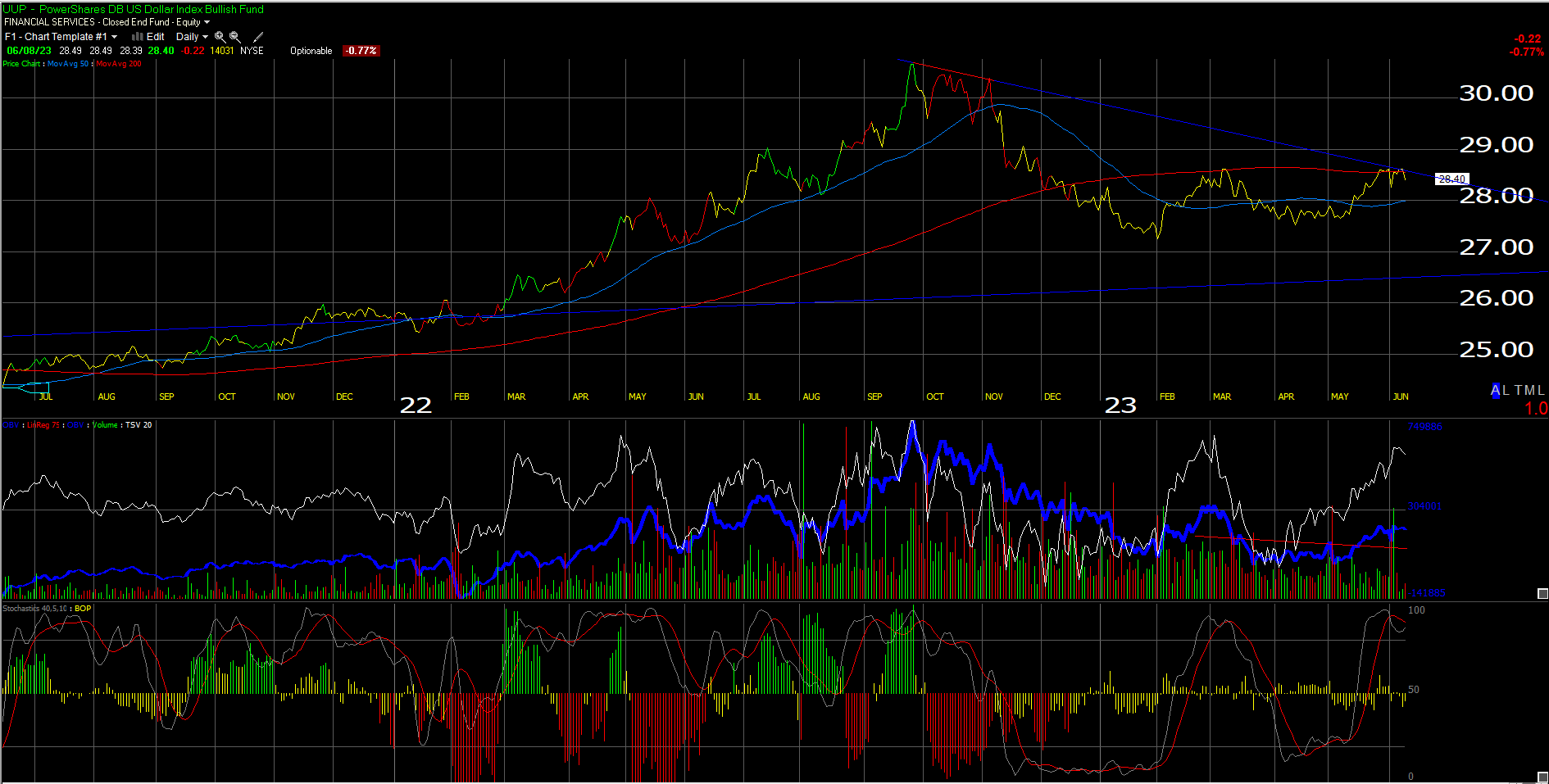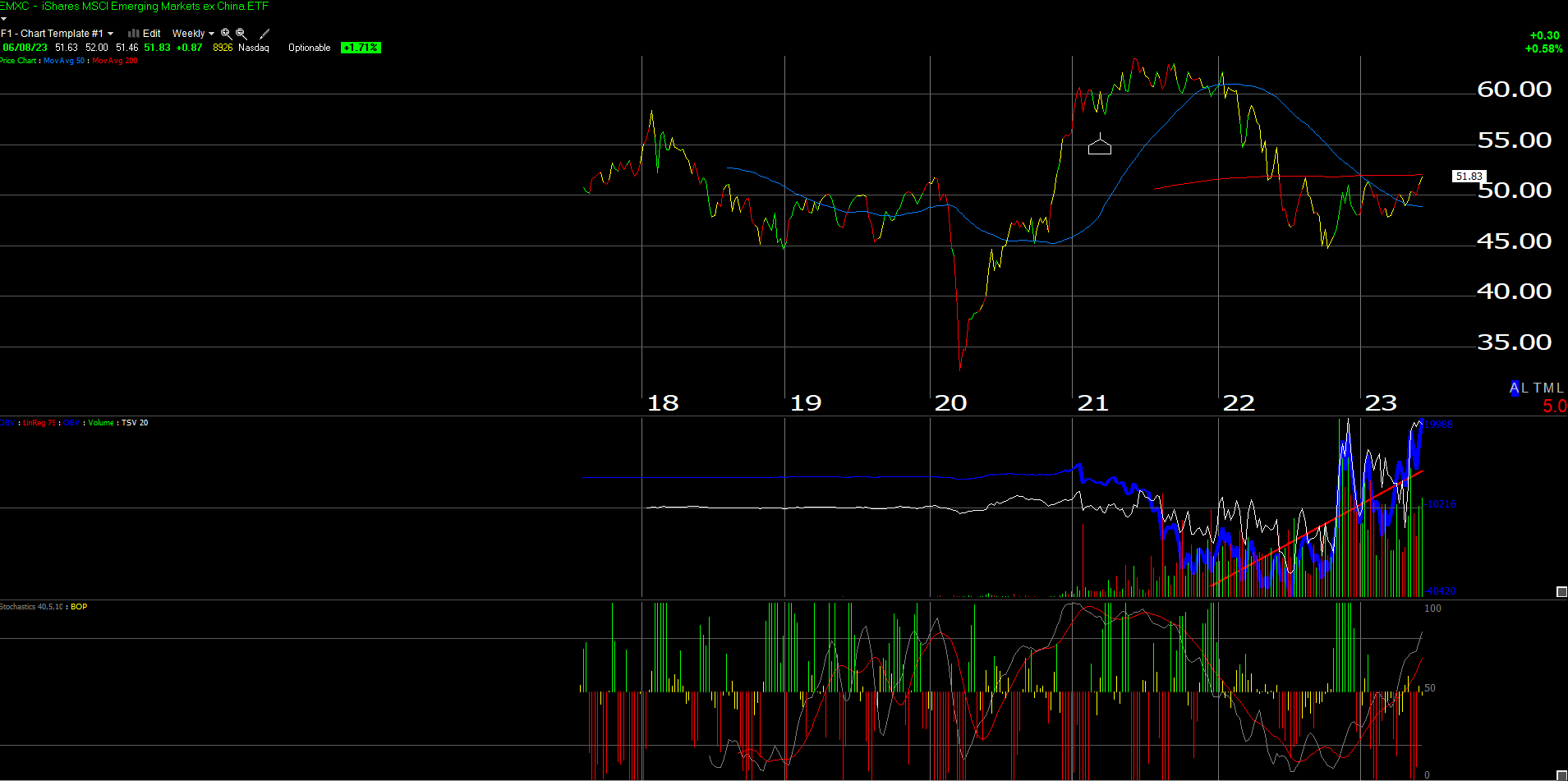This daily chart of the Invesco DB US Dollar Index Bullish Fund (NYSE:UUP) was sent to me about a month ago by a technician.

He knows I like International and Non-US asset classes heading into 2023.
As readers can see, it looks like the UUP is set to roll over after a decent run since March.
Looking at long-term returns:

Here’s a table posted a few times on this blog, but with annual returns updated as of 5/31/23. What interests me is the low 10-year and 15-year returns for the majority of the different ETFs.
Oakmark International Fund Investor Class and iShares ACWI have the best 15-year returns of the pack. The iShares MSCI ACWI ex U.S. ETF (NASDAQ:ACWX) has a 15-year return like all the rest.
Emerging markets and Non-US have been totally out of favor since 2006 – 2007. Back then, China was growing 15% a year and was driving a lot of the “excess return” as the S&P 500, and Nasdaq were totally flat.
Compare the international and Non-US returns for the 10 and 15-year periods to US indices for 10 and 15-year returns:

In the late 1990’s the difference between the S&P 500 and the Nasdaq was more “binary” – the S&P 500 and the Nasdaq and large-cap growth were clear winners, and everything else lagged badly.
Clients' largest non-US weightings:
- Oakmark International (OAKIX): 6% weight;
- Emerging markets ex-China (EMXC): 3% weight;
- Vanguard FTSE All-World Ex-US: small weight;
- Vanguard FTSE Developed Markets: small weight;
Currently, the direct Non-US and International investments are between 10% and 12% of clients' total holdings.
If the dollar does break down further here, it’s likely the weight will be raised.
Looking at the first spreadsheet under the “long-term returns,” the 5-year returns are shockingly bad. That’s got to be good, right?
One last chart:

After China clipped Jack Ma and sent him into hiding, all of the clients Vanguard FTSE Emerging Markets Index Fund ETF Shares (NYSE:VWO) was immediately sold, and the iShares MSCI Emerging Markets ex China (NASDAQ:EMXC) was purchased.
This EMXC chart is testing or bumping its 200-week moving average. A trade up and through $52 – $53 on decent volume would be a very good signal that the Emerging Markets Ex-China are back.
Top 10 Holdings as of 5/31/23:
- Microsoft (NASDAQ:MSFT): +37.5% YTD
- Blackrock (NYSE:BLK) Str Inc Opp: +1.5% YTD
- JP Morgan Income Fund: +1.99% YTD
- Oakmark International: +10.5% YTD
- SP 500 equal-weight: -0.67% YTD
- JP Morgan (JPM): +2.7% YTD
- Schwab Money Market:
- Amazon (NASDAQ:AMZN): +43.5% YTD
- EMXC: +6.0% YTD
- Barclay’s Agg: +2.64% YTD
- Charles Schwab (NYSE:SCHW): -36.1% YTD
- SPY: +9.68% YTD
- Alphabet (NASDAQ:GOOGL): +39.26% YTD
- Nasdaq 100: +30.89% YTD
That’s actually the top 14 holdings, but the 4 bond positions (actually 5) are disclosed as well. Schwab (SCHW) is the big drag on returns YTD, and the SP 500 equal-weight isn’t really contributing, but the mega-cap positions, after being a drag in 2022, are now contributing once again.
Conclusion
The UUP is worth watching here to see if it reverses and breaks the downward trendline and finishes back above its 200-day moving average or if it continues to head south and provides a little tailwind to international asset classes and mega-cap tech names which were drilled with “constant currency” comparisons to the dollar in 2022.
You don’t hear about this much, but I thought this was a timely blog post on the technology’s exposure to the strong dollar in 2022.
Will have the standard earnings update this weekend.
Take all of this as one person’s opinion. Past performance is no guarantee of future results, none of this is advice, just a way for me to stay disciplined and write about what I think are interesting topics. Investing can involve the loss of principal. Capital markets can and do change quickly, for both the good and bad. Know and understand your own sensitivity to market volatility.
